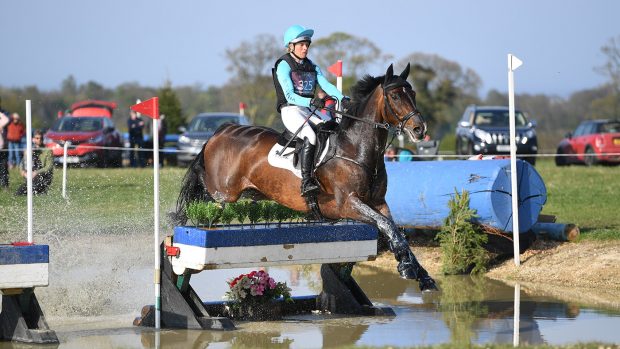A stable yard fire is every horse owner’s worst nightmare. But if you are designing a new yard, or planning to make changes to an existing one, fire safety should be high on your list of priorities to avoid a potential disaster.
Shropshire Fire and Rescue Service (SFRS) advises that, where possible, you use steel frames and masonry walls that do not easily ignite, and to keep timber — particularly soft woods — to a minimum. Cement and compacted earth floors are also recommended.
In February last year, a fire wiped out part of Muirmill Equestrian Centre in Ayrshire. Fortunately, all 21 horses were safely evacuated.
“The stone stables saved [the horses’] lives,” yard owner Laura McCabe told H&H.
“The fire took hold very quickly and wooden roof joists and beams in the stables were burning as we were taking the horses out, but all the brick work was fine.”
The fire at Muirmill — which started in the garage and spread to the stables — has made Laura reassess the layout and running of the yard.
“When designing a yard, we would now think about how many fire exits there were,” says Laura.
“A typical horseshoe-shaped yard with only one gate makes you ask how you would get out if the fire was at that point.
“So we’d now consider installing another exit at the back of the yard.”
American barns are a popular style of layout, but can raise safety questions.
Cameron Taylor at SFRS says: “You want to evacuate [an area] as quickly as possible in the event of a fire, and any enclosed area can make the fire situation worse.”
Before the fire at Muirmill, Laura had been planning to put a roof over the existing yard, as it rains a lot in Scotland, but has since changed her mind.
“Even without a roof the smoke was horrific and you couldn’t breathe — with a roof it would have been impossible,” she says.
However, Cameron recognises that American barns can be made a viable option from a safety perspective, by using non-combustible materials and by ensuring there are multiple exits.
Storage of bedding and feed should be high on your list of priorities when designing the yard.
“By their very nature, stables are remote from other buildings and arson is always a risk,” warns SFRS.
Straw, hay and other feed should not be kept in the loft or against the stables — the recommended separation between the building and storage areas is 6m.
“We would never store hay or straw in the yard area [since the fire], if at all possible,” says Laura.
“Shavings don’t burn well, but the plastic all melted and so 40 bales ended up in a huge pile.”
Cameron adds: “It is very important that you resist the temptation of using empty stables to store feed and bedding — you are just adding fuel for a fire.”
The positioning and maintenance of electrical equipment is also critical.
Wiring should be protected from being chewed by horses or vermin, and kept away from water sources.
Fire safety will be high on the priority list of any stable manufacturer you contact. Monarch Equestrian offers free onsite visits to discuss all aspects of stable design.
“All our stables are galvanized steel constructions with either hardwood, bamboo or plastic in-fills — all of which are not easily combustible,” says Barbara Fill at Monarch.
“Unfortunately, [fire safety] is not something many people consider, unless forced to by planning authorities.
“But hopefully the publicity of some of the tragic accidents will have made people think about their arrangements.”
Contact your local fire service for more advice.
This article was first published in Horse & Hound magazine (28 December 2013)




